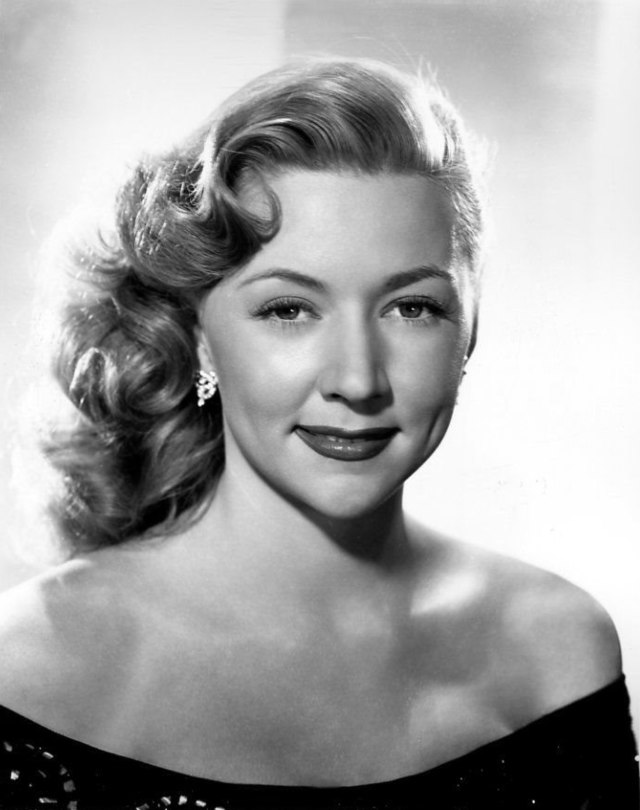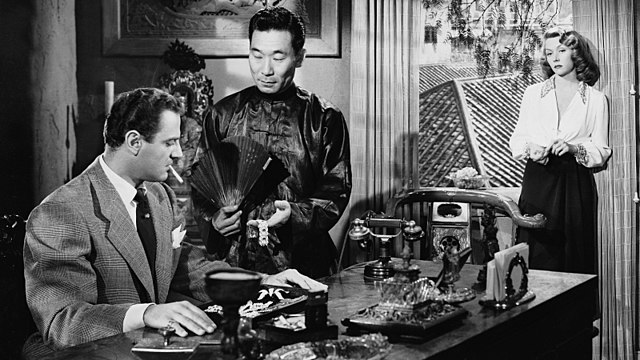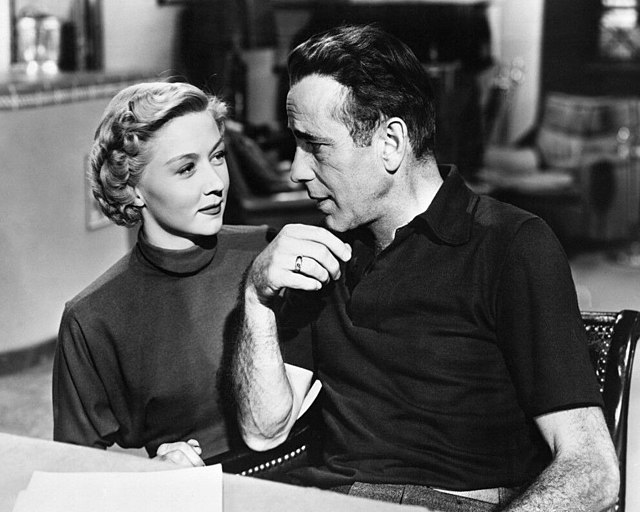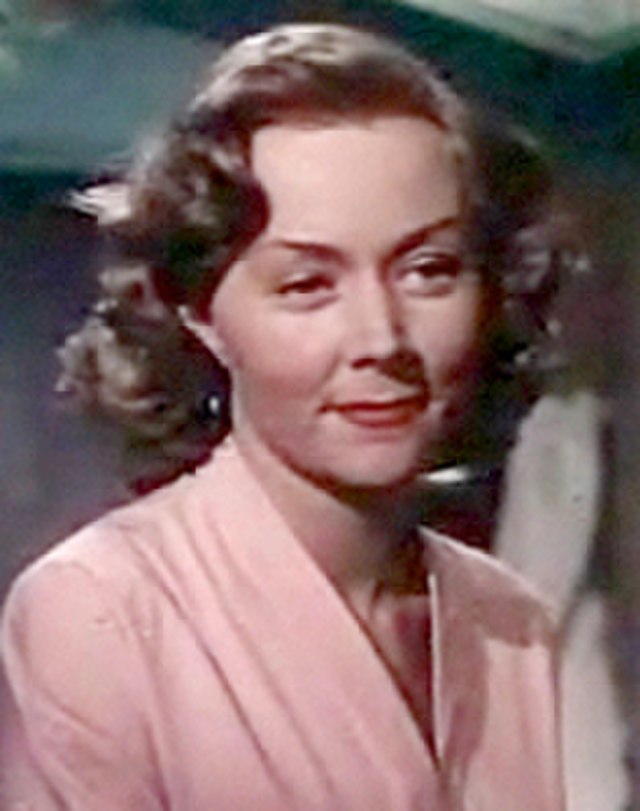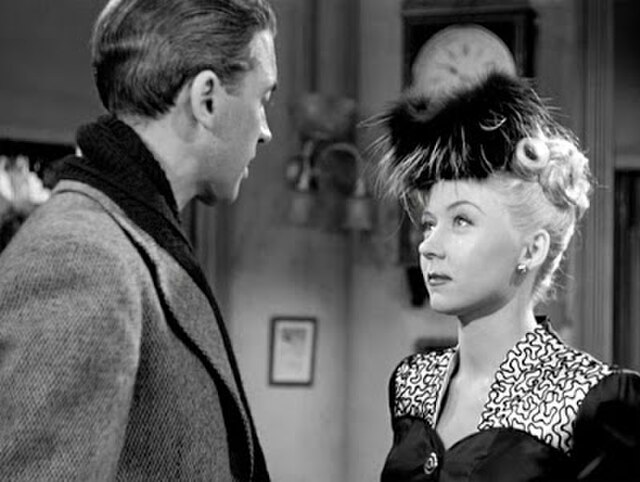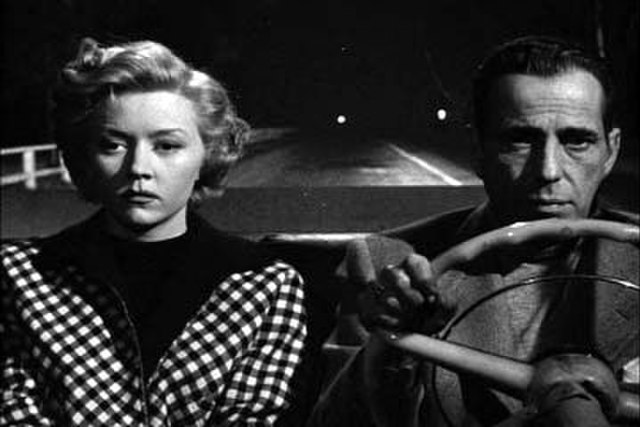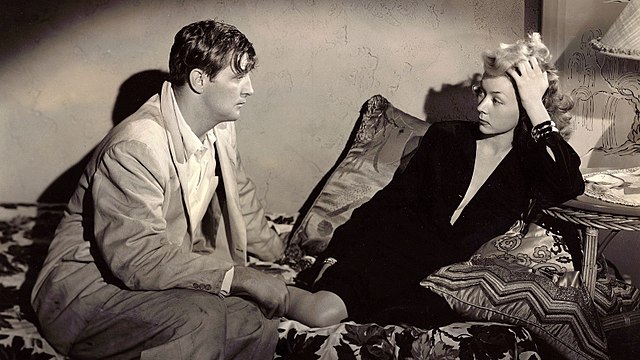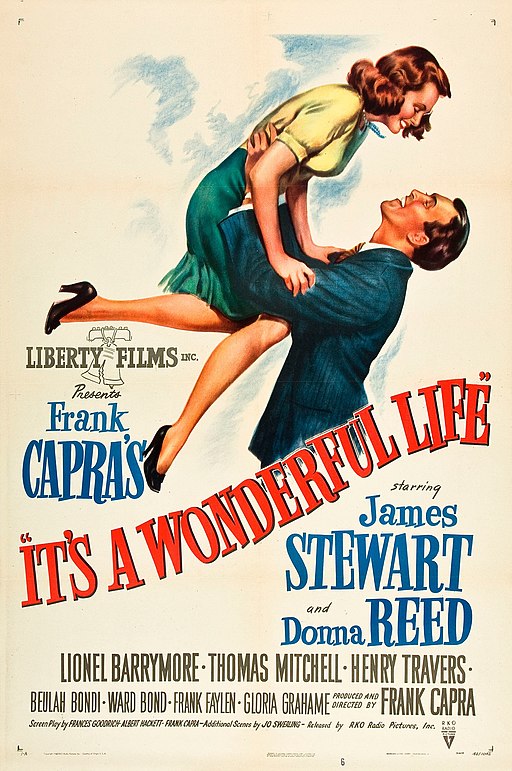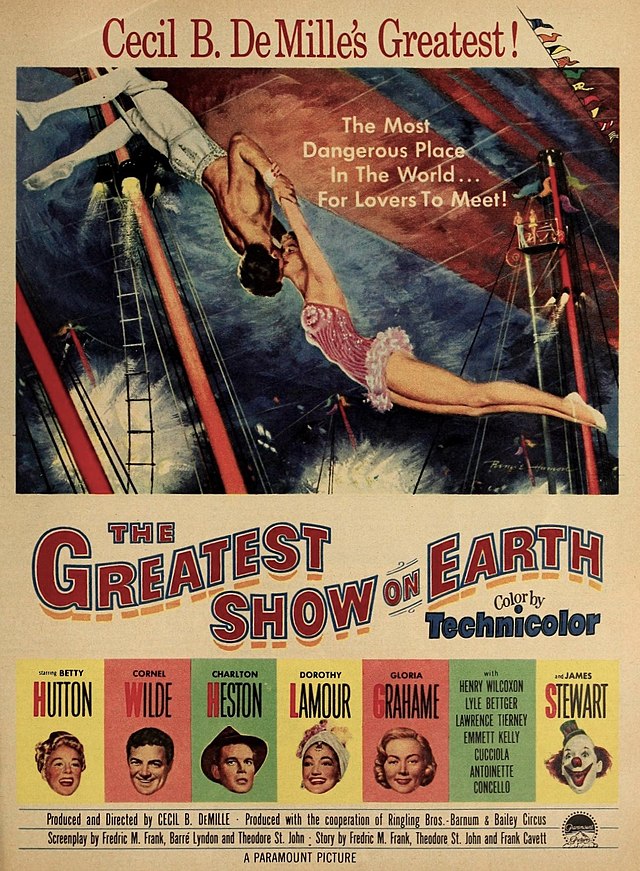Gloria Grahame
back| Full Name | Gloria Grahame Hallward |
| Stage Name | Gloria Grahame |
| Born | November 28, 1923 |
| Birthplace | Los Angeles, California, USA |
| Died | October 5, 1981 |
| Buried | Oakwood Memorial Park Cemetery, Chatsworth, California, USA |
| Married to | Stanley Clements (1945–1948) - Nicholas Ray (1948–1952) - Cy Howard (1954–1957) - Anthony |
| Children | Timothy Ray (with Nicholas Ray) - Anthony |
| Notable films | It's a Wonderful Life (1946) - Crossfire (1947) - In a Lonely Place (1950) - Oklahoma! (1955) |
Gloria Grahame
The Fragile Femme Fatale
Gloria Grahame (1923–1981) was a celebrated Hollywood actress known for her roles in film noir during the 1940s and 1950s. Born in Los Angeles, she rose to fame with It’s a Wonderful Life (1946) and became iconic in noir films like In a Lonely Place (1950) and The Big Heat (1953).
Her personal life was marked by scandal, particularly her marriage to Tony Ray, the son of her second husband, director Nicholas Ray. Despite career setbacks, Grahame continued acting in stage and film into her later years. Today, she is remembered as one of film noir's quintessential actresses, admired for her unique style and emotional depth on screen.
Related
Gloria Grahame (1923 – 1981)
Biography and Movie Career
Gloria Grahame Hallward was born on November 28, 1923, in Los Angeles, California. She came from a creative background; her father, Reginald Michael Bloxam Hallward, was an architect, while her mother, Jean McDougall, was a well-known stage actress and acting teacher. Her mother’s passion for theater greatly influenced Gloria, and she would soon follow in her footsteps.
From a young age, Grahame showed a flair for performance. After attending Hollywood High School, she honed her skills further in the theater. She began acting professionally in small roles on the stage, before being spotted by Louis B. Mayer of MGM Studios, who signed her to a contract. This was the first step on her path to becoming one of Hollywood's most iconic femme fatales.
Path to Success
Gloria Grahame’s breakthrough in Hollywood came in 1946 with It's a Wonderful Life, in which she played the flirtatious yet good-hearted Violet Bick. The role, although small, was memorable, and it showcased her ability to play characters who exuded charm but carried an air of vulnerability. However, Grahame’s real rise to prominence came with her roles in film noir, a genre that would define her career.
In 1947, she appeared in Crossfire, a film that earned her an Academy Award nomination for Best Supporting Actress. Her performance as a disillusioned nightclub hostess in the film resonated with audiences, and it firmly established her as one of the most captivating actresses in noir cinema. This success led to more roles in critically acclaimed films such as In a Lonely Place (1950), where she starred opposite Humphrey Bogart. Her portrayal of the conflicted and enigmatic Laurel Gray remains one of her most iconic performances.
Grahame’s peak came with her performance in The Bad and the Beautiful (1952), where she played the neglected wife of a writer. The role earned her the Academy Award for Best Supporting Actress. Despite being only on screen for a short time, her performance left a lasting impact, showcasing her ability to portray complex and layered characters.
Her performances in The Big Heat (1953) and Human Desire (1954) further cemented her legacy as a noir star. In The Big Heat, she played Debby Marsh, a tragic character who is both victim and avenger, embodying the darker themes that defined the noir genre. Grahame's smoldering, sultry screen presence made her a perfect fit for these kinds of roles, and she became a symbol of the dangerous allure of femme fatales.
Personal Life and Marriages
Gloria Grahame’s personal life was as dramatic and turbulent as her on-screen roles. She was married four times, and each of her marriages was marked by intense passion and scandal.
Her first marriage was to actor Stanley Clements in 1945, but it ended in divorce just three years later. Grahame’s second and most notorious marriage was to director Nicholas Ray, whom she married in 1948. Ray directed her in In a Lonely Place, and their relationship during the film's production was already crumbling. Ray caught her in bed with his 13-year-old son, Tony, which led to their divorce in 1952. The scandal rocked Hollywood, but it would not be the end of the story. In 1960, Grahame married Tony Ray, the stepson with whom she had had the earlier affair. This relationship lasted until 1974, and together they had two children. The marriage created a public uproar, and it negatively impacted her career as many studios distanced themselves from her.
Between those marriages, she was married to television producer Cy Howard from 1954 to 1957, with whom she had a daughter, Victoria. Like her previous relationships, it was marked by difficulties and ultimately ended in divorce.
Despite the controversy surrounding her personal life, Grahame was known to be passionate about her work, intensely devoted to acting, and always seeking to refine her craft. She also had a keen interest in plastic surgery, which became a fixation. Over the years, she underwent several procedures, particularly on her lips. Her attempts to maintain her youthful appearance through surgery, however, began to take a toll on her career, with rumors swirling in Hollywood about her altered looks.
Decline of Career and Later Years
By the late 1950s, Grahame’s star had begun to fade. The scandals of her personal life and the changes in her appearance made it difficult for her to secure the kinds of roles that had made her a star. She moved into television work and appeared in a handful of films throughout the 1960s and 1970s, but the golden age of her career was behind her.
Her fourth marriage to Tony Ray ended in divorce in 1974, and she found herself largely out of the spotlight. Grahame relocated to England, where she continued acting on stage and in small films. She was determined to keep performing, even though her Hollywood career had largely dwindled.
Death and Cause of Death
In the late 1970s, Grahame was diagnosed with breast cancer, but she initially refused treatment. She continued to work despite her illness, appearing in stage plays in the U.K. By 1981, the cancer had spread, but Grahame, ever defiant, insisted on working, even when her health had drastically declined.
While performing in a play in Liverpool, she collapsed and was taken to a hospital. Her children brought her back to New York City, where she died on October 5, 1981, at the age of 57. Her cause of death was peritonitis resulting from complications of the advanced cancer. Gloria Grahame was buried at Oakwood Memorial Park Cemetery in Chatsworth, California.
Legacy
Though her life was marked by scandal, personal tragedy, and career decline, Gloria Grahame’s legacy as one of Hollywood’s great film noir actresses remains intact. Her performances were magnetic, filled with a mix of sensuality, fragility, and danger. She left behind a body of work that continues to be admired by film historians and movie fans alike, particularly for her unforgettable roles in noir classics.
Her life story, with its highs and lows, is a testament to the complexities of fame and the sacrifices of Hollywood stardom.
Gloria Grahame Winning the Academy Award for Best Supporting Actress in 1953
Gloria Grahame: Femme Fatale with a Twist
Gloria Grahame's acting style was a unique blend of vulnerability, sensuality, and simmering intensity, making her one of the most captivating and memorable actresses of Hollywood's golden age, particularly in the film noir genre. Her performances often revolved around characters who straddled the line between strength and fragility, creating a sense of tension that kept audiences hooked.
Subtlety and Restraint
One of the hallmarks of Grahame’s acting was her ability to convey deep emotion and psychological complexity with minimal dialogue or overt expression. She had a quiet, almost understated style that contrasted sharply with the more melodramatic performances typical of the era. Instead of relying on grand gestures, she often conveyed her characters' inner turmoil through subtle physical cues—an arched eyebrow, a sideways glance, or a slight tremor in her voice. These small, detailed choices gave her performances an intriguing ambiguity, inviting viewers to look deeper into her characters' motivations.
In In a Lonely Place (1950), for instance, she plays Laurel Gray, a woman caught between love and fear of a man who might be dangerous. Grahame’s performance is restrained yet charged with emotion. Her guarded body language, her soft, slightly husky voice, and her expressive eyes all reflect her character's inner conflict, making her both enigmatic and deeply relatable. This ability to express so much while saying so little became a defining aspect of her style.
Femme Fatale with a Twist
Grahame is often remembered for her roles as femme fatales in film noir, but what set her apart was how she subverted the traditional trope. While many actresses in these roles leaned into the manipulative, icy, or overtly seductive aspects of the archetype, Grahame often imbued her characters with a layer of vulnerability or a tragic edge, making them more human and relatable.
In The Big Heat (1953), she plays Debby Marsh, the girlfriend of a violent mobster. At first glance, Debby seems like the typical noir “bad girl,” but Grahame transforms her into a deeply sympathetic figure. When her character is disfigured by a pot of boiling coffee thrown at her, Grahame plays her pain not just physically, but emotionally, showing a woman whose beauty and confidence have been shattered. Debby ultimately becomes a tragic figure who seeks revenge, and Grahame’s performance makes her more than just a stock character—she's a woman searching for redemption, making the audience root for her even in a dark and violent world.
Sensuality and Softness
Grahame had an undeniable sensuality that she brought to many of her roles, but unlike the bombshell allure of actresses like Marilyn Monroe or Rita Hayworth, her sensuality was often more nuanced and layered. There was a certain softness and vulnerability that accompanied her seductive screen presence. She played women who were often damaged or conflicted, and this gave her characters a sense of depth and complexity.
In Crossfire (1947), her character, Ginny, is a world-weary hostess who seems hardened by life, but Grahame gives her a subtle tenderness. In one of the film’s key scenes, she sits at a bar, disillusioned by the men around her, but when she speaks, there’s a softness to her voice and a hint of sadness in her eyes. This juxtaposition between tough exterior and inner fragility became a signature of Grahame’s performances.
Emotional Complexity
One of Grahame’s greatest strengths as an actress was her ability to balance multiple, often contradictory emotions in a single scene. Her characters frequently existed in emotional gray areas, and she excelled at portraying this kind of complexity. Her performances often revealed a character’s deep insecurities or hidden fears, even when they outwardly appeared confident or in control.
In The Bad and the Beautiful (1952), for which she won an Academy Award, Grahame played Rosemary Bartlow, the wife of a writer who feels neglected. In a relatively short amount of screen time, she manages to portray a full arc—from playful, flirtatious spouse to tragic victim. The role allowed her to showcase her ability to inhabit a character who is both vibrant and deeply tragic, and Grahame did this with natural ease, letting her emotions flow seamlessly between moods.
Fragility and Tragic Vulnerability
One of the most compelling aspects of Grahame’s acting style was the vulnerability she brought to her roles. Whether she was playing a femme fatale, a supportive wife, or a tragic figure, there was always an undercurrent of fragility that made her performances resonate. She had an ability to make her characters feel wounded, as if they had been through immense pain, but were still fighting to survive.
Her role as Violet Bick in It’s a Wonderful Life (1946) exemplifies this. Even though she plays a small-town flirt, there’s a sense of desperation in Violet that comes through in Grahame’s performance. When Violet is about to leave town, broke and humiliated, her expression of defeat and resignation is powerful. Grahame lets us see the broken dreams behind the smile, turning what could have been a shallow role into something emotionally resonant.
Soft-Spoken Yet Powerful
Grahame’s voice was a key tool in her acting arsenal. Her soft, slightly husky voice had an intriguing quality that could be both soothing and unsettling. She often delivered her lines in a low, almost breathy tone, which added to the vulnerability and sensuality of her characters. This soft-spokenness, however, never diminished her power on screen. In fact, it drew the audience in, making her characters feel more intimate and personal.
In Oklahoma! (1955), a rare departure from her usual noir roles, Grahame played Ado Annie, a lighthearted, comic character. Even in this musical role, her voice conveyed a mixture of innocence and mischief, showing her versatility as an actress. She was able to take a role that might have seemed light and fun on the surface and give it depth through her delivery and expressive nature.
Conclusion: A Master of Subtle Complexity
Gloria Grahame’s acting style was defined by subtlety, emotional complexity, and a delicate balance between strength and fragility. She had a gift for turning what could have been one-dimensional characters into layered, deeply human figures. Whether she was playing a femme fatale in a noir thriller or a tragic figure in a drama, she brought a rare depth to her performances, making her characters feel fully realized and emotionally rich.
Her unique screen presence, marked by her soft voice, expressive face, and ability to convey deep emotion with minimal effort, set her apart from other actresses of her era. Grahame was never afraid to let her characters be flawed or vulnerable, and it’s this combination of sensuality, softness, and simmering emotional intensity that continues to make her performances resonate with audiences today.
Memorable Quotes from Gloria Grahame
Quotes from Her Films:
- From The Big Heat (1953):
Debby Marsh:
“I've been rich and I've been poor. Believe me, rich is better.”
- From In a Lonely Place (1950):
Laurel Gray:
"I lived a few weeks while you loved me."
- From The Bad and the Beautiful (1952):
Rosemary Bartlow:
"When you look at me, I can hardly breathe."
- From It’s a Wonderful Life (1946):
Violet Bick:
"I know how to spell 'bank,' B-A-N-K."
- From Oklahoma! (1955):
Ado Annie Carnes:
"I’m just a girl who can’t say no."
Quotes About Life and Acting:
- On acting and fame:
"I married Nicholas Ray, the director. People yawned. Later on I married his son and from the press's reaction, you'd have thought I was committing incest or robbing the cradle!"
- On her typecasting in film noir:
“I do good in pictures because I’m so bad in life.”
- On Hollywood and her career:
"It wasn’t the way I looked at a man; it was the thought behind it."
- On her personal philosophy:
“I don’t think I ever understood Hollywood.”
What Others said about Gloria Grahame
Nicholas Ray (Director and Second Husband):
- On her personal struggles:
"She was a very troubled woman, but there was something so genuine and so touching about her. I loved her for her vulnerability, but it was also the very thing that tore her apart." - On her talent:
"Gloria had a rare gift. She could take a simple line and give it so many layers. There was a world of emotion hidden behind everything she said."
Humphrey Bogart (Co-star in In a Lonely Place):
- On her performance in In a Lonely Place:
"Gloria is a hell of an actress. She brought a kind of sadness to that role, something that was all her own. She made you believe she had been through some rough times."
Kirk Douglas (Co-star in The Bad and the Beautiful):
- On her professionalism:
"She was quiet and focused. She wasn’t like most actresses. You never knew what was going on in her mind, but when the camera started rolling, she became this different person—so alive and so magnetic."
Jean-Luc Godard (Film Critic and Director):
- On her allure in film noir:
"Gloria Grahame is the true face of film noir—beautiful, haunted, mysterious. She embodied everything the genre stands for."
Robert Mitchum (Co-star in Macao):
- On working with her:
"Gloria was great to work with. She wasn’t like the other girls, didn’t care much for being the center of attention, but when she was on set, you couldn't take your eyes off her."
Paul Schrader (Film Critic and Director):
- On her acting style:
"Gloria Grahame’s performances were filled with a kind of fragile intensity. She was always on the edge, like she could break at any moment, and that’s what made her so compelling to watch."
Kim Novak (Contemporary Actress):
- On Grahame’s legacy:
"She was unlike any actress I’ve ever seen. She had this way of making you feel her pain and desire in every scene, without ever saying too much. There’s something timeless about her performances."
Charles Higham (Film Critic and Biographer):
- On her beauty and appeal:
"Grahame had a soft, almost languid beauty that belied the depth of her talent. She was able to play both the innocent and the femme fatale, often at the same time."
Peter Turner (Actor and Later-Life Companion):
- On their relationship (in his memoir Film Stars Don’t Die in Liverpool):
"Gloria had this vulnerability that made you want to take care of her, but she was also fiercely independent. She never liked being told what to do, but there was an immense sadness inside her. She lived her life on her terms, even in her final days."
Richard Brody (Film Critic):
- On her screen presence:
"Grahame had an ability to disappear into her roles while still retaining a magnetic presence. She didn’t just perform the script; she inhabited the emotional world of her characters, often giving more than what was written."
James Mason (Co-star in The Good Die Young):
- On her enigmatic nature:
"There was something about Gloria, an untouchable quality. She could be warm and open one moment, and then distant the next. But that only added to her charm and mystery."
Her Reputation in Hollywood:
- On her personal life:
Gloria Grahame’s personal life, especially her marriage to Nicholas Ray’s son Tony, often overshadowed her career. Many in Hollywood were quick to judge her, and as a result, she became somewhat of an outsider in the industry. Despite this, those who worked closely with her often described her as a dedicated professional, albeit reserved and private.
Critical Recognition:
- On her role in The Big Heat (1953):
Critics praised her portrayal of Debby Marsh, a character who shifts from a victim to a woman seeking vengeance. Many saw this as one of her most powerful performances. Film historian Eddie Muller said, "Her character’s transformation is one of the most heartbreaking and fierce journeys in noir, and Gloria Grahame handled it with perfect restraint."
Awards and Recognition
Gloria Grahame, while primarily remembered for her iconic roles in film noir, received a fair amount of critical acclaim and recognition for her performances during her career.
Academy Awards (Oscars)
- Best Supporting Actress – The Bad and the Beautiful (1952)
Won: This was Grahame’s most significant achievement, winning the Academy Award for Best Supporting Actress for her role as Rosemary Bartlow. Although her screen time was brief (just under 10 minutes), her performance left a lasting impact, showcasing her ability to bring nuance and depth to her characters.
- Best Supporting Actress – Crossfire (1947)
Nominated: Grahame received her first Oscar nomination for Best Supporting Actress for her portrayal of Ginny in Crossfire, a film noir centered around a murder investigation. Though she didn’t win, the nomination helped cement her as a major talent in Hollywood.
Golden Globe Awards
While Grahame never won a Golden Globe, she did gain significant recognition for her body of work during the height of her career. The lack of nominations in this category reflects how her more prominent roles were often in supporting parts in film noir, a genre that at the time did not receive as much mainstream awards recognition.
Other Recognitions
- Walk of Fame: Gloria Grahame was honored with a star on the Hollywood Walk of Fame. Her star, located at 6522 Hollywood Boulevard, was a testament to her lasting contribution to cinema, especially in the film noir genre.
- National Film Registry Induction:
- Some of the films she starred in, such as It’s a Wonderful Life (1946), have been added to the U.S. Library of Congress' National Film Registry for being "culturally, historically, or aesthetically significant." While this is more of a recognition for the films themselves, Grahame’s performances were integral to the success and impact of these films, further solidifying her legacy.
- Some of the films she starred in, such as It’s a Wonderful Life (1946), have been added to the U.S. Library of Congress' National Film Registry for being "culturally, historically, or aesthetically significant." While this is more of a recognition for the films themselves, Grahame’s performances were integral to the success and impact of these films, further solidifying her legacy.
Critical Acclaim
- While not always translated into formal awards, Grahame’s work has been lauded in critical circles, particularly in retrospectives on film noir. Her nuanced performances in films such as In a Lonely Place (1950) and The Big Heat (1953) are often cited by film critics and historians as among the finest examples of complex, layered characters in mid-century American cinema.
- Film Festival Recognition: In later years, especially after her death, retrospectives and festivals have celebrated Grahame’s work, acknowledging her as one of the key figures of the film noir era. Noir-themed festivals often screen her films, where she is remembered as one of the genre's quintessential actresses.
Legacy and Influence
Although Grahame did not accumulate a large number of awards during her lifetime, her performances have only grown in stature over time. Modern critics and filmmakers regard her as a pivotal figure in post-war Hollywood, especially in the realm of emotionally complex, morally ambiguous characters. Her influence is often seen in later generations of actresses who bring subtlety and emotional depth to their roles.
Posthumous Recognition
- Documentaries and Retrospectives: After her death, Grahame’s work has been the subject of several documentaries and cinematic retrospectives. These programs have revisited her performances, highlighting her importance to the film noir genre and the cinematic landscape of the 1940s and 1950s.
- Books and Film Essays: Many film historians have written about Grahame's unique contributions to film noir, frequently mentioning her in discussions of the genre’s best performances. Her subtle, emotionally charged acting style is often analyzed for its depth and complexity, especially considering the constraints of many of her supporting roles.
Honorable Mentions
- British Academy Film Awards (BAFTA): Though never formally nominated for a BAFTA, Grahame’s work in films such as The Man Who Never Was (1956) and The Good Die Young (1954), both of which were British productions, gained attention from international audiences, contributing to her global recognition.
Movies with Gloria Grahame
1940s
- Blonde Fever (1944)
Synopsis: A small drama where a restaurant owner falls for a gold-digger. Gloria plays Sally Murfin, a minor role in the film.
- Without Love (1945)
Synopsis: A romance starring Katharine Hepburn and Spencer Tracy. Gloria has a small uncredited role as a secretary.
- It’s a Wonderful Life (1946)
Synopsis: A beloved holiday classic where an angel shows a depressed man the impact he's had on others' lives. Gloria plays Violet Bick, a flirtatious woman with a good heart who is affected by the main character's choices.
- Song of the Thin Man (1947)
Synopsis: A mystery-comedy in the popular Thin Man series. Gloria plays Fran Ledue Page, a singer who is involved in the film's murder mystery plot.
- Crossfire (1947)
Synopsis: A noir thriller about a murder with anti-Semitic undertones. Gloria plays Ginny, a world-weary woman who becomes involved in solving the crime. She received her first Academy Award nomination for this role.
- Merton of the Movies (1947)
Synopsis: A comedy about a country bumpkin who becomes a movie star. Gloria plays Phyllis Montague, an actress in the silent film industry.
- Roughshod (1949)
Synopsis: A Western about a cattle drive with a group of women and a threat from a group of escaped convicts. Gloria plays Mary Wells, one of the women saved by a cowboy.
- A Woman’s Secret (1949)
Synopsis: A drama about a woman who is accused of shooting her singing protege. Gloria plays Estelle, the protege in question, in this mystery-driven drama.
1950s
- In a Lonely Place (1950)
Synopsis: A noir film starring Humphrey Bogart as a troubled screenwriter suspected of murder. Gloria plays Laurel Gray, a neighbor who becomes romantically involved with him, only to doubt his innocence.
- Side Street (1950)
Synopsis: A crime thriller about a man who steals money and gets entangled in murder. Gloria has a minor role as a nightclub singer.
- Macao (1952)
Synopsis: A noir thriller set in the exotic locale of Macao, involving murder and intrigue. Gloria plays Margie, a woman caught up in the mystery surrounding stolen diamonds.
- The Bad and the Beautiful (1952)
Synopsis: A drama about the dark side of Hollywood filmmaking. Gloria plays Rosemary Bartlow, the wife of a writer, in a role that earned her an Academy Award for Best Supporting Actress.
- The Greatest Show on Earth (1952)
Synopsis: A circus drama directed by Cecil B. DeMille. Gloria plays Angel, a trapeze artist caught in a love triangle.
- Sudden Fear (1952)
Synopsis: A noir thriller about a playwright who realizes her husband is plotting to kill her. Gloria has a supporting role as Irene Neves, a co-conspirator in the murder plot.
- Man on a Tightrope (1953)
Synopsis: A drama about a circus troupe in Cold War Europe trying to defect to the West. Gloria plays Zama Cernik, the wife of the circus owner.
- The Big Heat (1953)
Synopsis: A noir thriller about a cop seeking justice after his wife’s murder. Gloria plays Debby Marsh, the girlfriend of a gangster who becomes a key figure in bringing down a crime syndicate.
- Human Desire (1954)
Synopsis: A noir film about an affair that leads to murder. Gloria plays Vicki Buckley, a woman trapped in a dangerous relationship who manipulates a railroad worker into committing a crime.
- Naked Alibi (1954)
Synopsis: A noir thriller about a cop investigating a suspected murderer. Gloria plays Marianna, a nightclub singer who gets caught up in the pursuit of the suspect.
- The Good Die Young (1954)
Synopsis: A British crime thriller about four men who turn to robbery, with fatal consequences. Gloria plays the unhappy wife of one of the men, a star-studded British production.
- Oklahoma! (1955)
Synopsis: A musical adaptation of the classic Rodgers and Hammerstein Broadway show. Gloria plays Ado Annie Carnes, a flirtatious woman who is torn between two suitors.
- Not as a Stranger (1955)
Synopsis: A medical drama about a driven doctor. Gloria plays Harriet Lang, a woman who is seduced by the doctor's charm.
- The Cobweb (1955)
Synopsis: A drama set in a psychiatric clinic. Gloria plays Karen McIver, the wife of the clinic's director, who becomes embroiled in the tensions between the staff and patients.
- The Man Who Never Was (1956)
Synopsis: A WWII espionage drama. Gloria plays Lucy Sherwood, a woman who helps the British intelligence trick the Nazis with a fake identity.
- Ride Out for Revenge (1957)
Synopsis: A Western about conflict between Native Americans and settlers. Gloria plays Amy Porter, the fiancée of the sheriff, whose sympathies align with the Native Americans.
1960s
- The Fugitive Kind (1960)
A drama about a drifter who enters the lives of people in a small town. Gloria plays Vee Talbot, a woman trapped in a loveless marriage to the town's sheriff.
- Chop Suey (1960)
A low-budget drama where Grahame appeared briefly as herself.
- Ride Beyond Vengeance (1966)
A Western about a rancher seeking revenge after being branded and left for dead. Gloria plays Bonnie Shelley, a character tied to the rancher's past.
- The Todd Killings (1971)
A crime thriller about a series of murders. Gloria plays Mrs. Roy, the mother of a troubled teenager.
- Blood and Lace (1971)
A low-budget horror film about an orphanage run by a sadistic woman. Gloria plays Mrs. Deere, the sinister matron of the orphanage.
- Mansion of the Doomed (1976)
A horror film about a doctor who performs illegal eye transplants. Gloria plays Katherine, the doctor’s assistant who helps with the unethical surgeries.
1970s-1980s
- Head Over Heels (1979)
Synopsis: A romantic comedy set in the art world. Gloria plays Lillian, an eccentric art gallery owner.
- The Nesting (1981)
Synopsis: A horror film about a haunted house. Gloria plays Florinda Costello, one of the spirits trapped in the mansion.

